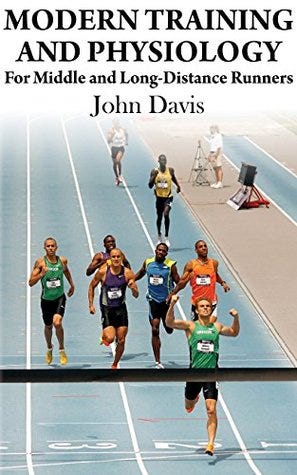Optimizing Endurance Training: A Review of Modern Techniques
Written on
Introduction to Endurance Training
This book provides a comprehensive yet succinct overview of training for endurance runners, approaching the subject from a robust scientific perspective. It’s particularly beneficial for those who are becoming serious about their running or for athletes who may have been misinformed after their college years.

My Journey into Aerobic Science
Since the sixth grade, I've had a fascination with the science behind optimizing aerobic exercise. Back then, I was a dedicated swimmer, and our coach introduced us to the concept of lactate threshold, emphasizing the need to avoid overexertion during practice. Although the terminology of lactate accumulation was the prevailing understanding of overtraining at that time, the main takeaway was clear: pushing too hard consistently is detrimental. It wasn't until my senior year of high school that I truly grasped this lesson.

The Challenge of Learning
Navigating pop culture, training regimes, and psychological factors can make this lesson difficult to internalize. Our coach would often show us videos of football players training rigorously at dawn, and we were taught that relentless effort was the key to achieving results. Even philosopher Erich Fromm noted that a significant issue in modern society is the struggle to engage in challenging tasks. This mindset inevitably influenced my approach to both swimming and later running.
While I agree with Fromm's observations regarding societal tendencies, in competitive fields or areas of deep personal interest, the pursuit of challenges can sometimes overshadow the importance of effective training practices. It's crucial to understand what truly constitutes effective training, whether for work or in the context of this review.
The Philosophy of Training
The main philosophy presented in this book is that training should be viewed as a recipe with specific ingredients in precise proportions rather than a random mixture. Overloading any one aspect at the wrong time won't yield the desired results. This approach demands a unique kind of discipline. For those familiar with platforms like LetsRun or the foundational literature in running that Davis references, such as Lydiard, Bowerman, and Canova, the training prescriptions may not seem revolutionary. However, Jon Davis excels at linking these age-old training principles with contemporary scientific findings.
For instance, while I was aware of the concepts of aerobic and anaerobic thresholds and their respective paces, I lacked a thorough understanding of the physiological processes involved and how to effectively balance these in a training program. Davis adeptly clarifies the distinctions between these two training zones (linear vs. exponential lactate accumulation) and offers guidelines on the appropriate duration and frequency of each within a training cycle, along with explanations about the implications of excessive anaerobic work leading to chronic blood acidity and neuromuscular stress.
There are various topics covered, from basic physiology and muscle fiber differences to the psychological aspects of running and enhancing running economy.
Areas for Improvement
However, certain topics could have benefitted from deeper exploration. For instance, in the initial chapter where Davis addresses energy systems, he categorizes fat and pyruvate/lactate mitochondrial oxidation under "aerobic metabolism." While I am not an expert (I aim to become one through my PhD), I believe this simplification may overlook significant differences in fat and glucose metabolism below the aerobic threshold at various effort levels. Research from experts like Iñigo San Milan and Peter Attia suggests that fat oxidation is a crucial adaptation for distances beyond the 10k and can help conserve muscle glycogen for critical moments in a race. More discussion on this subject would have been appreciated.
Additionally, Davis’ insights on the mental aspects of running felt somewhat superficial. The essential message was to run in a relaxed manner and avoid excessive aggression, which can lead to premature energy system activation. While I agree with this principle, the chapter felt brief and could have delved deeper into this critical topic. Despite knowing the importance of relaxation for years, I have struggled to apply it effectively in races. Fortunately, Davis expands on this in more detail on his blog, RunningWritings.
Future Training Adjustments
As this book focuses on running training, my key takeaways revolve around improving my running regimen. I plan to emphasize relaxation during my runs; I should only “reach” towards the end of a race. Additionally, my stride rate is too low (approximately 170 rpm instead of the ideal 180 rpm), and I need to incorporate sprint drills to address this. Reintroducing hilly long runs to train fast-twitch muscle fibers is also on my agenda, moving away from the flat long runs I had been doing. Lastly, I intend to rely more on my bodily sensations rather than metrics from training devices like heart rate monitors, as the latter, while accurate, detracts from the enjoyment of running. After all, I managed to achieve a sub-15:00 time without a heart rate monitor!